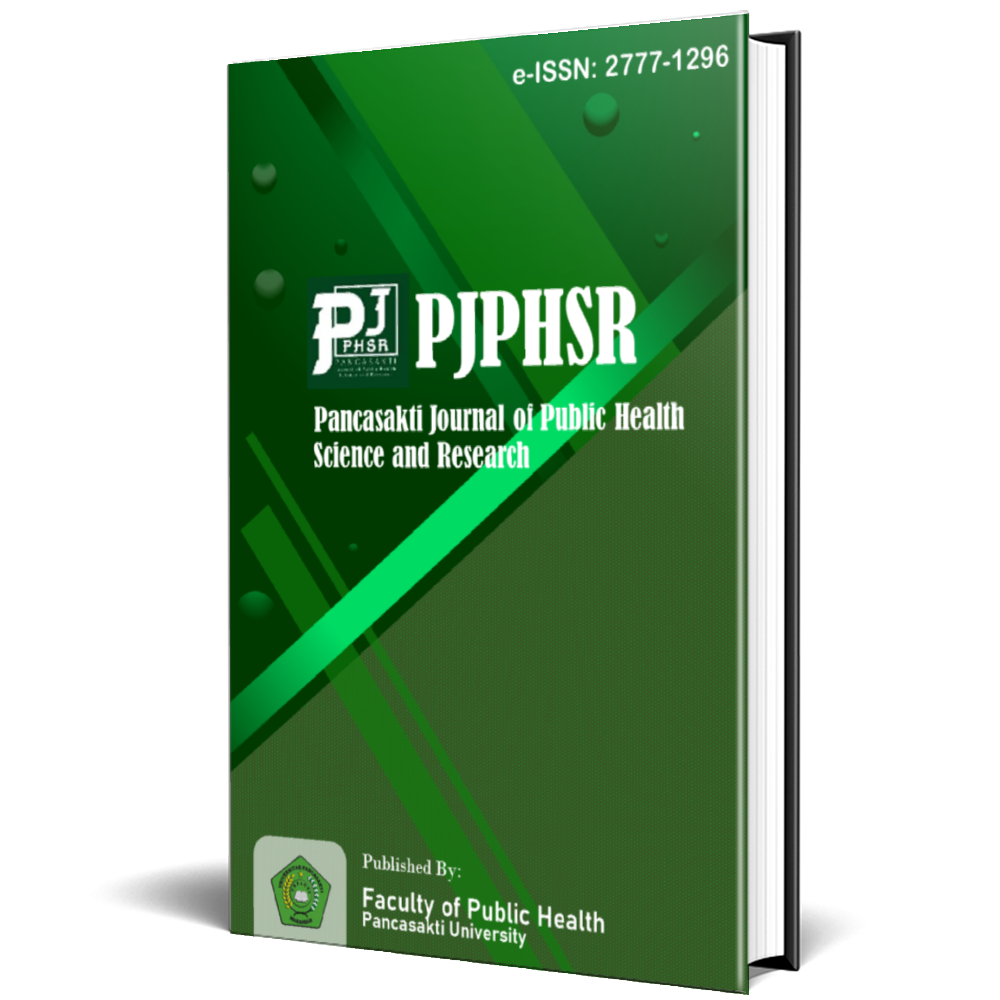Analysis of Preventive Behavior of Leucorrhea in Hormonal Injection Contraceptive Users at Rappokalling Health Center, Makassar City
Abstract
Vaginal discharge is a common reproductive health issue that requires prompt and appropriate management to prevent complications such as pruritus, genital edema, dysuria, and lower abdominal or back pain. This study aimed to examine factors associated with vaginal discharge prevention behavior among injectable hormonal contraceptive users. A cross-sectional analytical design was employed in the Rappokalling Community Health Center area, Makassar, from September to December 2023. A total of 63 respondents met the inclusion criteria and participated in the study. Data were collected using a structured questionnaire measuring four key variables: self-motivation, perceived benefits, interpersonal influence, and commitment to action. Statistical analysis was conducted using SPSS software with chi-square tests to identify associations between these variables and preventive behavior. Findings revealed significant associations between prevention behavior and both self-motivation (p = 0.002) and perceived benefits (p = 0.005). While interpersonal influence (p = 0.078) and commitment to action (p = 0.309) were not statistically significant, their potential behavioral influence remained evident. Women with higher self-motivation and perceived benefits tended to adopt better preventive practices. Additionally, those influenced by supportive interpersonal environments demonstrated stronger prevention behaviors, whereas respondents with lower commitment to action showed weaker engagement in preventive measures. These findings highlight the importance of strengthening intrinsic motivation and perceived benefit to enhance vaginal discharge prevention among injectable contraceptive users.
References
BL, A.S. (2021) ‘Hubungan Kontrasepsi Hormonal Suntik dengan Keputihan pada Akseptor KB di Klinik X Kecamatan Cisauk’.
D, T. (2022) ‘Hubungan Pemakaian Kontrasepsi Hormonal Jenis Suntik dengan Keputihan pada Akseptor KB Di PMB Chorul Malang’.
Dkk, S. (2011) ‘Hubungan Penggunaan Kontrasepsi Hormonal dan Pengetahuan Ibu tentang Perawatan Organ Reproduksi dengan Kejadian Keputihan di Wilayah Kerja Puskesmas Pekauman Banjarmasin’.
Genter, L. (2012) ‘Cara mengatasi keputihan’.
H.F, S. (2015) ‘Hubungan Penggunaan dan Lama Penggunaan Jenis Kontrasepsi Hormonal dengan Keputihan pada Akseptor Keluarga Berencana di Wilayah Kerja Puskesmas Kartasura Sukoharjo’.
Handayani, R. (2021) ‘Hubungan Vulva Hygiene Dan Penggunan KB Dengan Keputihan Pada Wanita Usia Subur’, Keperawatan Priority, 4(1), pp. 50–59.
Hapsari R dkk (2012) ‘Hubungan Jenis Keluarga Berencana’.
Ida, S. (no date) ‘Hubungan Kontrasepsi Suntik dengan Peningkatan Berat Badan Akspetor’.
Kementrian Kesehatan RI (2018) Profil Kesehatan Indonesia. Jakarta.
Permatasari, N.Z. (2018) ‘Praktik Vulva Hygiene Pada Remaja Putri di Ponpes Putri Nurul Burhany I Mranggen Kabupaten Demak’.
Purbowati (2021) ‘Pengaruh Penggunaan IUD terhadap Penyakit Keputihan di Puskesmas Kebasan Kabupaten Banyuma’.
R, T. (2013) ‘Hubungan Pemakaian Pembersih Vagina dengan Kejadian Keputihan pada Remaja Putri’.
Rahayu, R.P. (no date) ‘Faktor-faktor yang berhubungan dengan Keputihan Pada Wanita Subur’.
S, H. (2017) Buku Ajar Pelayanan Keluarga Berencana.
Saifuddin (no date) Buku Panduan Praktis Pelayanan Kontrasepsi.
Siregar, meina I. (2019) ‘Hubungan Tingkat Pendidikan Pasangan Usia Subur 15-49 Tahun Keberhasilan Program Keluarga Berencana’.
Wahyuni WNM (no date) ‘Faktor yang Mempengaruhi Kejadian Keputihan’.
Copyright (c) 2025 Linda Hardianti Saputri, Samsu Alam, Nurul Husnah

This work is licensed under a Creative Commons Attribution-NonCommercial-ShareAlike 4.0 International License.








